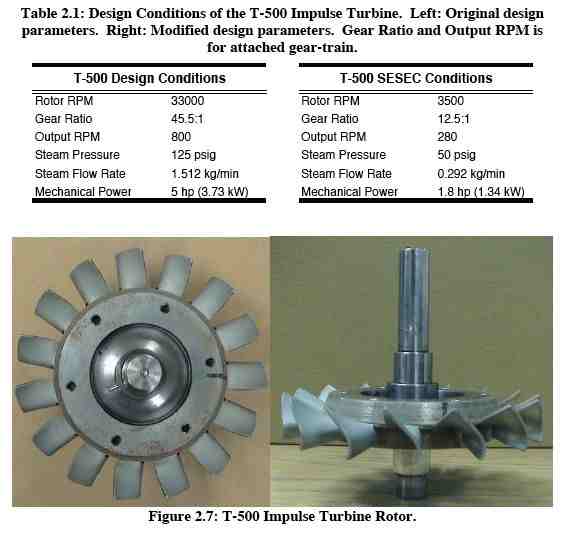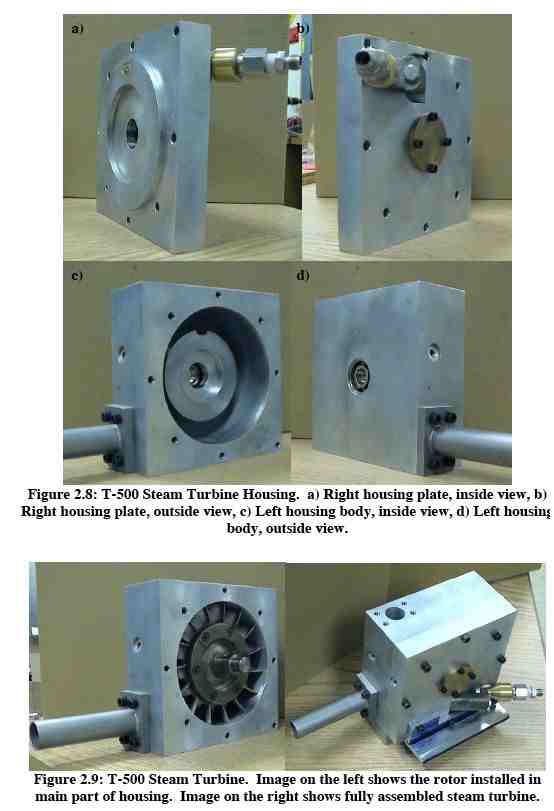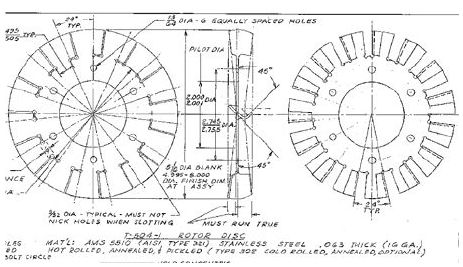Bladed Turbine
Main > Energy > Solar Power > Solar Turbine
Introduction
A proven heat engine option is a bladed turbine. The advantage is that experimental results in literature for small-scale bladed turbines indicate approximately 5-fold better performance than the bladeless turbine. While bladeless turbine results in the Warren Rice experiments indicate 5 lb/min mass flow rates of the working fluid and a mechanical power output of about 1 hp, the C. Christopher Newton Master's thesis on a solar turbine indicate a mass flow rate of under 1 lb for similar power output. The performance of the latter was over 1 kW of mechanical power from a turbine with a rotor of 5" diameter.
The bladed turbine should thus be examined for practicality - primarily in its ease of fabrication and longevity - if we are considering sustainable energy systems. Plans for this turbine are available from Reliable Steam Engine Co (see last product on the page).
Bladed Turbine Design and Performance
The following is taken from the above reference on the 5" bladed turbine, which was built and tested as part of Newton's thesis:
Note: Original design parameters (T-500 Design Conditions) are reliable; new design parameters - as theorized in the Master's thesis (T-500 SESEC Conditions) - are questionable - due to several inconsistencies in the data shown in the thesis. Note that the SESEC parameters appear to show much better performance at a lower steam flow rate and pressure - which is highly questionable for turbines.
Bladed Turbine Fabrication
The heart of the bladed turbine is the rotor. The housing and other structural components may be almost identical to the bladeless turbine version.
How difficult is it to fabricate this turbine compared to the bladeless turbine?
Comparison of Bladed and Bladeless Turbines
We are considering small turbines running at approximately 3600 rpm for direct coupling to generators. In both cases, there may be issues in terms of direct coupling to a generator - gearing may be desirable - but should be avoided for sake of turbine lifetime.
Bladed:
- Rotor is made of only one disk
- Fabrication of rotor involves bending of blades to the required shape, followed by meeting of tight tolerances for blade motion within a housing
- Literature indicates 5-fold improved performance over bladeless turbines
- There are no major issues with keeping blades from failing over time
Bladeless:
- Rotor is made of many disks
- Fabrication of rotor involves simple cutting of disks to the required shape, followed by meeting of tight tolerances for blade motion within a housing
- Ease of fabrication is an advantage
- There are difficulties in keeping the working disks from distorting and failing over time


